Samsung Galaxy Note 8 review: Big-screen blockbuster is back without the bang (in a good way)
But is a stylus worth the extra money?
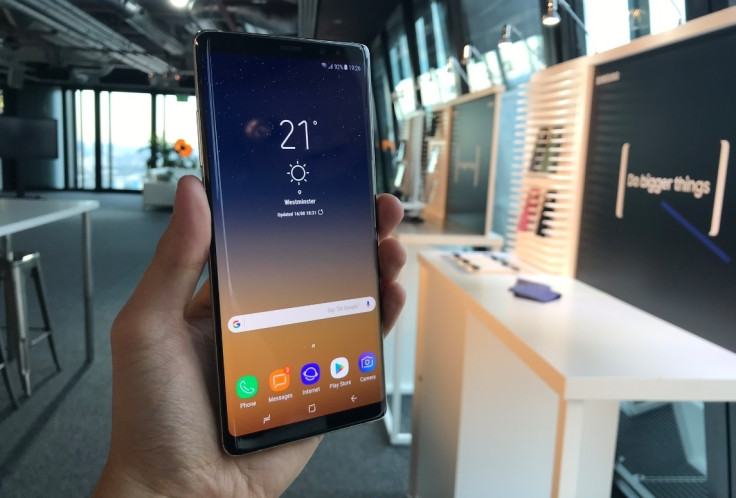
A year on from what we thought would be the death of the Note name, Samsung is back with the Galaxy Note 8. This phone replaces the Note 7, which celebrated its own launch by repeatedly bursting into flames due to malfunctioning batteries, forcing Samsung to remove it from sale, permanently end production, and crack open a window to clear the acrid smoke left behind.
It was an embarrassing moment for the world's biggest phone maker and Apple's chief rival, but recovered gracefully with the excellent Galaxy S8 and S8 Plus, launched earlier this year. Now, instead of putting it out to pasture, Samsung has let the Note name back into the house, trusting it to thrust the world's favourite (only) smartphone-and-stylus duo back into the limelight.
But is this - deep breath - £869 smartphone really worth £100 more than the near-identical S8 Plus? Can buyers see the S Pen stylus bringing that much extra value to the table, and will consumers trust Samsung not to burn their fingers for a second time? Let's find out.
Samsung Galaxy Note 8 review: Design
The Note 8 looks almost identical to the Galaxy S8 and S8 Plus. All three phones have the same 'Infinity Display' design, where the screen appears to cascade off the edges of the handset, while stretching further to the top and bottom than on previous Samsungs.
This elongation means the physical home button has been sidelined for an on-screen alternative, which offers up a simulated clicking sensation when you press it, similar to the haptic feedback found on the 3D Touch system of all iPhones from the 6S onwards.
Samsung has covered the front and back in glass, while the chassis is made from metal and the S Pen stylus is plastic. As with the S8 duo, the Note 8 has a power and screen lock button on the right and a volume rocker on the left, above a button dedicated to summon Bixby, Samsung's new Siri-style assistant. The button's functionality can be switched off, but Samsung is not allowing developers to use the key for anything else.

The Note 8 is fractionally larger than the S8 Plus in every direction, while at a not-inconsiderate 195g it weighs 22g more.
Unlike current iPhones, Samsung continues to offer a headphone jack with the Note 8, although Bluetooth headphones are of course also supported.
Despite the extra heft, the Note 8 is still a gorgeous handset, boasting one of the best smartphone designs on sale today. Until the iPhone X comes along next month, we think Samsung is top of the class when it comes to handset aesthetics, from the curved screen to the glossy black finish, it oozes a premium sense of style and sophistication.
Samsung Galaxy Note 8 review: Display
All of that continues with the display, because so much of the phone is dominated by that 6.3in panel. That size makes it an unnoticeable 0.1in larger than the Galaxy S8 Plus, while the resolution is the same at 1440 x 2960; that means the Note offers 521 pixels per inch and one of the best viewing experiences on any handheld device.
It really is beautiful and unlike the S8 Plus, the Note 8's screen can handle HDR10, the current flagship in video quality. Rival format Dolby Vision is missing, and a lack of pixels means the Note can't display 4K Ultra HD, but with HDR colours and vibrant, blacks are deep and the resolution sits somewhere between Full HD and Ultra HD - more than enough for mobile viewing, that's for sure.
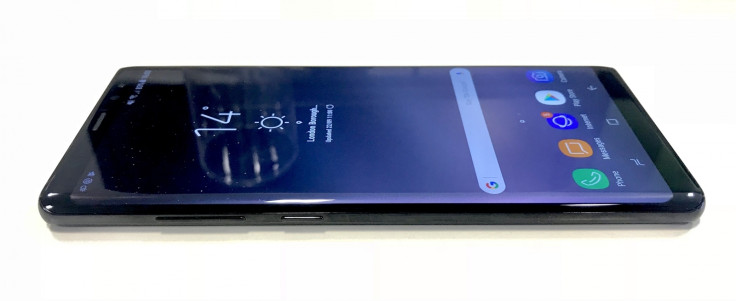
Samsung Galaxy Note 8 review: S Pen
And now to the Note 8's raison d'être, its S Pen stylus. Included with every Note since the 2011 original, the plastic pen deploys from the lower corner and lets you sketch or write on the screen. As with the ill-fated Note 7, the stylus has just over 4,000 levels of pressure sensitivity, can be used on a wet screen - presumably to remind yourself to buy an umbrella - and gives the option to quickly scribble a white 'ink' note on the phone's black screen while it is locked.
Scribbling on the Note 8's screen feels more natural than ever and, providing you actually remember how and when it use it, the stylus can be incredibly convenient. Signing and returning forms without printing and scanning (or even leaving your email inbox) is a great time-saver.
For regular note takers the S Pen will make a lot of sense, as it always has, but forcing a smartphone stylus into your life where there wasn't one before is a challenge. We enjoy poking around the phone with the S Pen as a novelty, but we can't see our productivity improving if we used it as intended. Your mileage may vary.
Samsung Galaxy Note 8 review: Software, performance, battery life and Bixby
The similarities between the S8 Plus and Note 8 continue when we look at the spec sheet and software. Both use the Exynos 8895 Octa processor, both have 6GB of RAM and both use Samsung's latest interpretation of Android 7.1 Nougat. It's Samsung's best effort yet with slick, responsive visuals and far less clutter than Samsungs of old.
What still annoys us is Samsung's insistence on preloading its own version of Android applications - so you end up with two web browsers (Chrome and Samsung's own) and two email clients.
In fitting a massive screen, Samsung has paved the way for two apps to be shown at once, and unique for the Note 8 is the ability to launch pairs of apps at once with a single tap. These pairs of apps are found in a menu summoned by swiping in from the right curved edge of the display. Pairs which work together include YouTube and Maps, Gmail and Word, or Calendar and Messages.
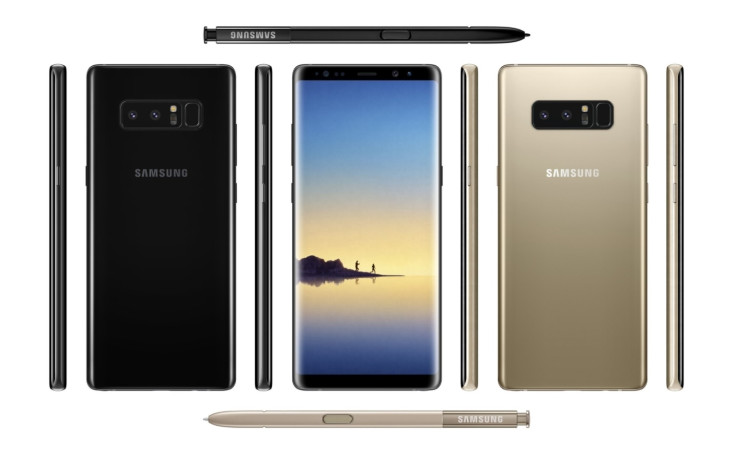
Modern smartphone performance is almost universally good, with very little to tell them apart. And while 3D games no longer tax phones like the Note 8, a real demonstration of the handset's performance comes with adding Samsung's optional DeX Station, a dock which connects the Note 8 to a PC monitor, keyboard and mouse.
It's still Android, but in a PC environment with a toolbar, taskbar, multiple windows and everything you'd expect from a PC or Mac alternative. It's amazing to think we are now at a stage where smartphones performance is reaching parity with mid-range laptops and threaten to replace the desktop for average users. If you don't require high-end video editing or gaming, a Note 8 plus DeX Station could be all you need.
The Note 8 can be secured and unlocked in more ways than ever before. There are the familiar options of swipe (no security), pattern, PIN and password, then the biometric options of facial recognition, fingerprints and iris.
We opted for facial recognition and found it to be fast and accurate, with the phone unlocking little more than a second after coming to life with a press of the screen lock button. This is great in theory, but makes viewing your notification screen impossible, as the phone unlocks before you have a chance to read anything. Notifications are shown more simply on the screen when the phone is asleep, but reading the more detailed message previews on the lock screen isn't possible.
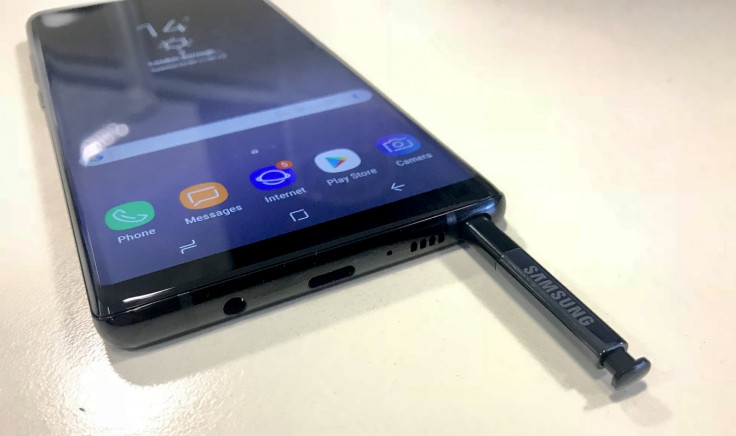
It should be known, however, that this is a visual system and not the 3D face-mapping feature used by Apple on the iPhone X. This means none of the iPhone X's face-tracking smarts and the ability to send an animated winky face to your friends.
Fingerprint scanning works well, but locating the scanner on the back of the phone and to the side of the camera flash is not easy without looking. The iPhone 7 and 8's Touch ID and Sony's side-mounted scanner are more conveniently located.
Battery life falls into the generic 'about a day but you'll have to charge every night' category shared by almost all of today's smartphones. Worth noting is how this phone's battery is slightly smaller than its predecessor's, and smaller than that of the S8 Plus, at 3,300mAh compared to 3,500. It's only a small difference, however, and not surprising given what happened repeatedly to the Note 7's batteries.
Samsung Galaxy Note 8 review: Cameras
Arguably the most important feature of any new smartphone, the camera has become a key battleground for Apple, Samsung and Google to fight it out. For the Note 8, Samsung has stuck with the same 12-megapixel resolution as the S8 Plus, but now there are two rear cameras, both 12MP and set up so that one is telephoto and the other is wideangle, or 26mm and 52mm respectively. Both lenses have optical image stabilisation for sharper images and smoother video.
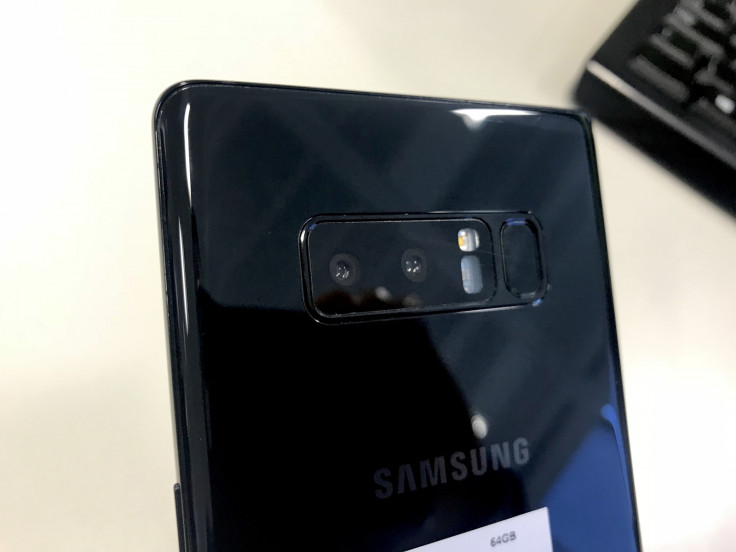
This gives the Note 8 the same ability as the iPhone 7 Plus to zoom in 2x optically without the loss in image quality associated with the digital zoom of other smartphones.
New for the Note 8's camera is Live Focus, which works in a similar way to Apple's Portrait Mode on the iPhone 7 and 8 Plus. It lets you blur the background of an image, making the subject appear sharper. You can adjust the amount of blur, both before and after the photo is taken, and the phone takes a second photo at the same time with its wide angle lens, letting you pick between two versions of the same scene, one tightly-cropped with background blur, and the other much wider.
Live Focus works well, but as with such systems from Apple and other Android platforms, the background blur doesn't always fit crisply around the subject, as it would when shooting with an SLR camera.
The front camera uses an 8-megapixel sensor, can shoot at 1440p which is slightly above Full HD, and has automatic High Dynamic Range (HDR).
The Galaxy Note is becoming something of a hard sell to the mass market. Everyone who wants a flagship Samsung can buy the S8 in a size which suits them, and while the Note's camera is an improvement this is, as ever, a case of marginal gains.
The big difference is of course the S Pen. Some customers will swear by the stylus and argue how they couldn't live without it and its digital note-taking ability, while others will wonder what all the fuss is about.
Ultimately, that decision is for the customer to make. For half a decade we have been attracted to the Note range for being slightly different; the alternative flagship fighting its own battle in a world of paint-by-numbers smartphones with few defining features. The S8 and S8 Plus offer better value for money and the Note's camera isn't an improvement large enough to justify the price hike.
But where such objective comparisons will give a winner and a loser, plucking for the Note and its stylus is an entirely subjective decision. It either fits into your life, or it doesn't. As reviewers we are just glad the option exists, and relieved that Samsung has kept its oddball alive for another year.
© Copyright IBTimes 2025. All rights reserved.






















